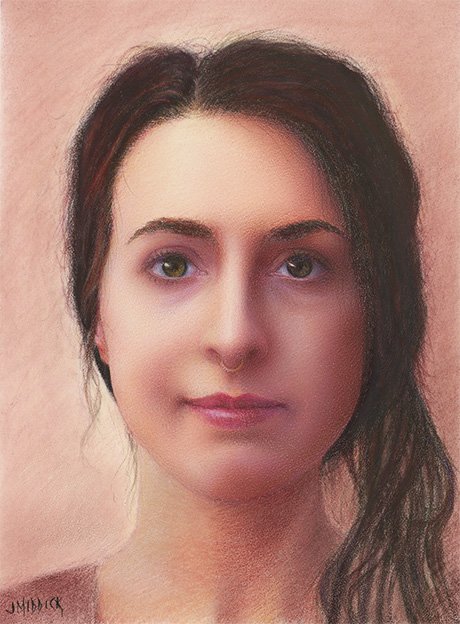I want to explore and explain a time-honored technique in the art world that has guided many artists for centuries: the grisaille technique.
I’ve adapted this approach for my own artwork. The John Middick Grisaille Method or technique (Or, as some call it, The “G” Method) has made my life much easier and simplified the rendering process.
While this method is typically associated with oil painting, I've adapted it for use with colored pencils, and it has turned out to be extremely useful for my art with colored pencil. I'm excited to share my process with you all and hopefully inspire you to try it out for yourself.
Starting of the grisaille method on the Sharpen-Up Challenge in Members Circle.
Fully rendered piece using the grisaille method.
Why Should You Use It
The first reason to use the grisaille method is that it saves time and reduces the need to think about color choices. When you create the shadows first (or dark values), as you do in the grisaille method, you don't have to figure out what the colors will be in the darker areas.
In essence, the work has already been done for you, as all you need to do is add the mid-tone and light colors on top of the dark colors.
And VOILA! You’ve got the color you needed in the dark part of the composition! No mental color acrobatics required to get there.
2. The second reason to try this approach is that it allows you to first observe your subject matter in a way that helps you to understand its overall form without getting bogged down in the details of color. Once you go back over the entire composition with color, you already have a familiarity with the subject.
The Essence of Grisaille
There seems to be some confusion about this technique, so I would like first to explain it.
"Grisaille" is a French term, literally translating to "grayness". In the art world, it describes a monochromatic painting technique where an artist uses varying shades of gray to create a composition that exudes depth and a three-dimensional feel. While traditionally used as an underpainting in oils, the technique can be adapted for other mediums, such as colored pencil.
My Unique Grisaille Approach in Colored Pencil Art
Now, let's dive into my unique grisaille approach. This method allows me to explore the depth and volume of my subject before introducing color, thereby ensuring a firm grasp on the form of the composition.
1. Choosing the Right Pencil
I start my drawings with a darker Faber-Castell, Polychromos pencil. My personal favorites are usually dark indigo or caput mortuum. These colors provide a solid base for my work, and they’re on the dark side of the value scale.
2. Focusing on the Darkest Areas
The next stage is all about laying down the darkest tones in the composition. On a value scale ranging from 1 (white or lightest) to 10 (black or darkest), I primarily target the 7 to 9 range during this stage. If I'm creating a portrait, for example, I'll begin with the pupils because they are usually the darkest areas, then move to the edges of the nostrils and the corners of the mouth, among other dark areas.
3. Expanding to Midtones
Once I've established the darkest regions, I start moving outwards, filling in the mid-tones. These typically fall within the 4 to 6 range on the value scale. This process starts to bring my artwork to life, providing more form and depth to the composition.
4. Introducing Color
Lastly, with the solid “grayscale” underdrawing in place, it's time to introduce color. I gently layer colors on top of my grisaille underpainting. Using multiple light layers with an extremely sharp pencil. The underlying dark tones lend themselves beautifully to the creation of three-dimensional forms, which adds that sense of realism.
Final Thoughts
The beauty of art, in any medium, lies in the endless possibilities for exploration and innovation. Adapting the grisaille method to colored pencil art might seem unorthodox at first, but it's an approach that I have found tremendously rewarding. It allows me to understand my subject's depth and form thoroughly before bringing it to life with colors.
Feel free to experiment with this approach, and remember, art is a process of constant learning and evolution. You might surprise yourself with what you can create!
Until next time, keep those pencils moving!


